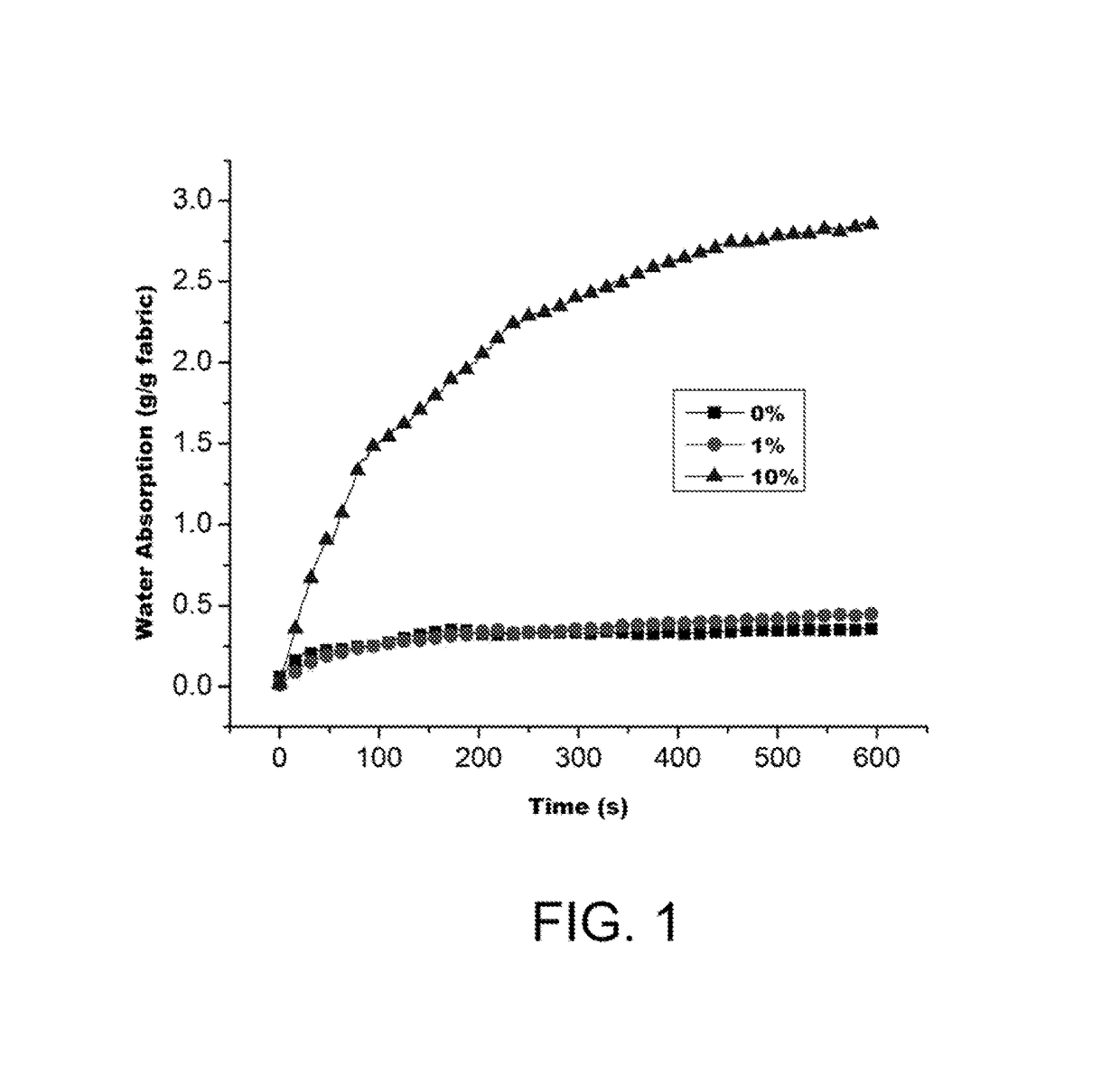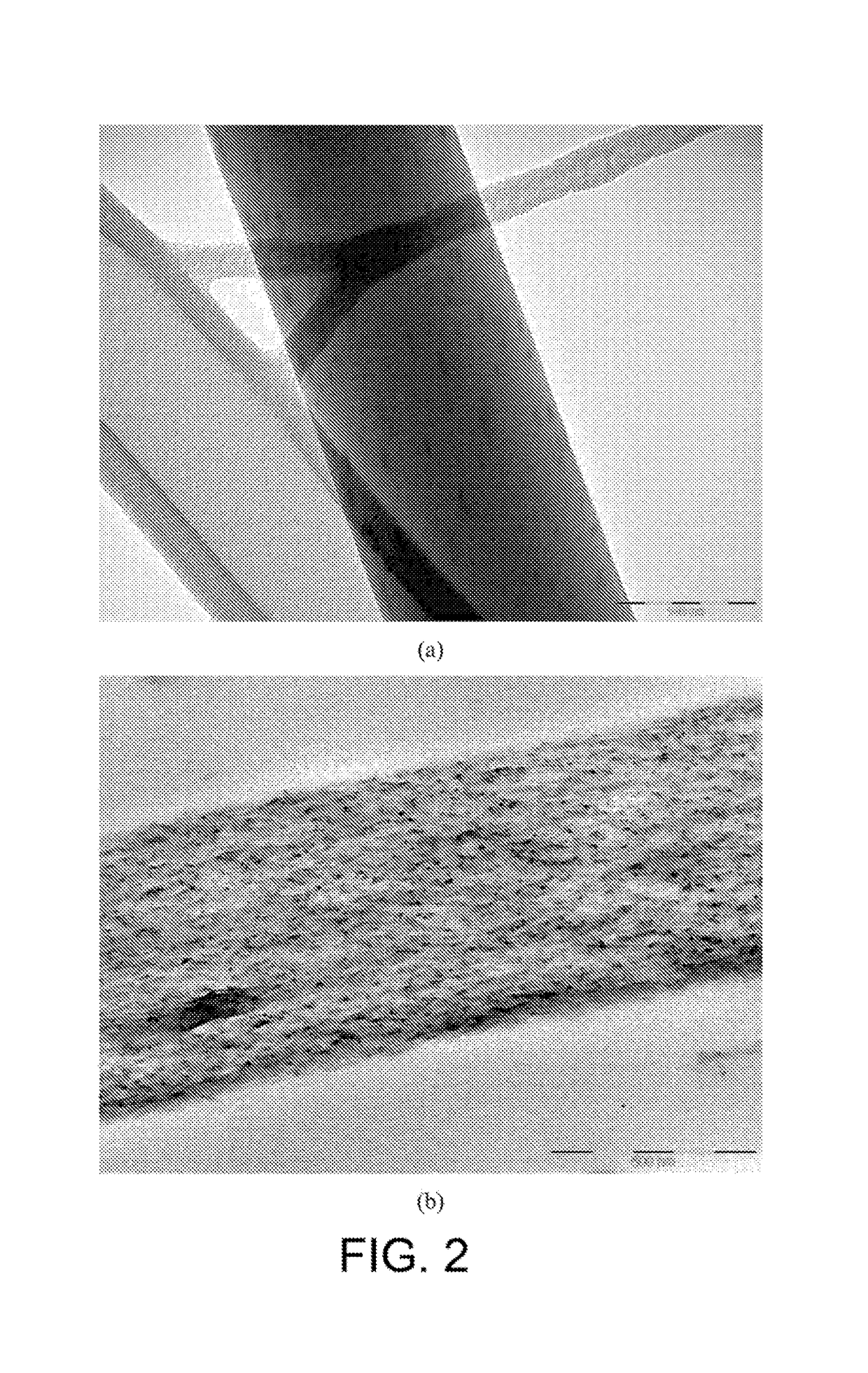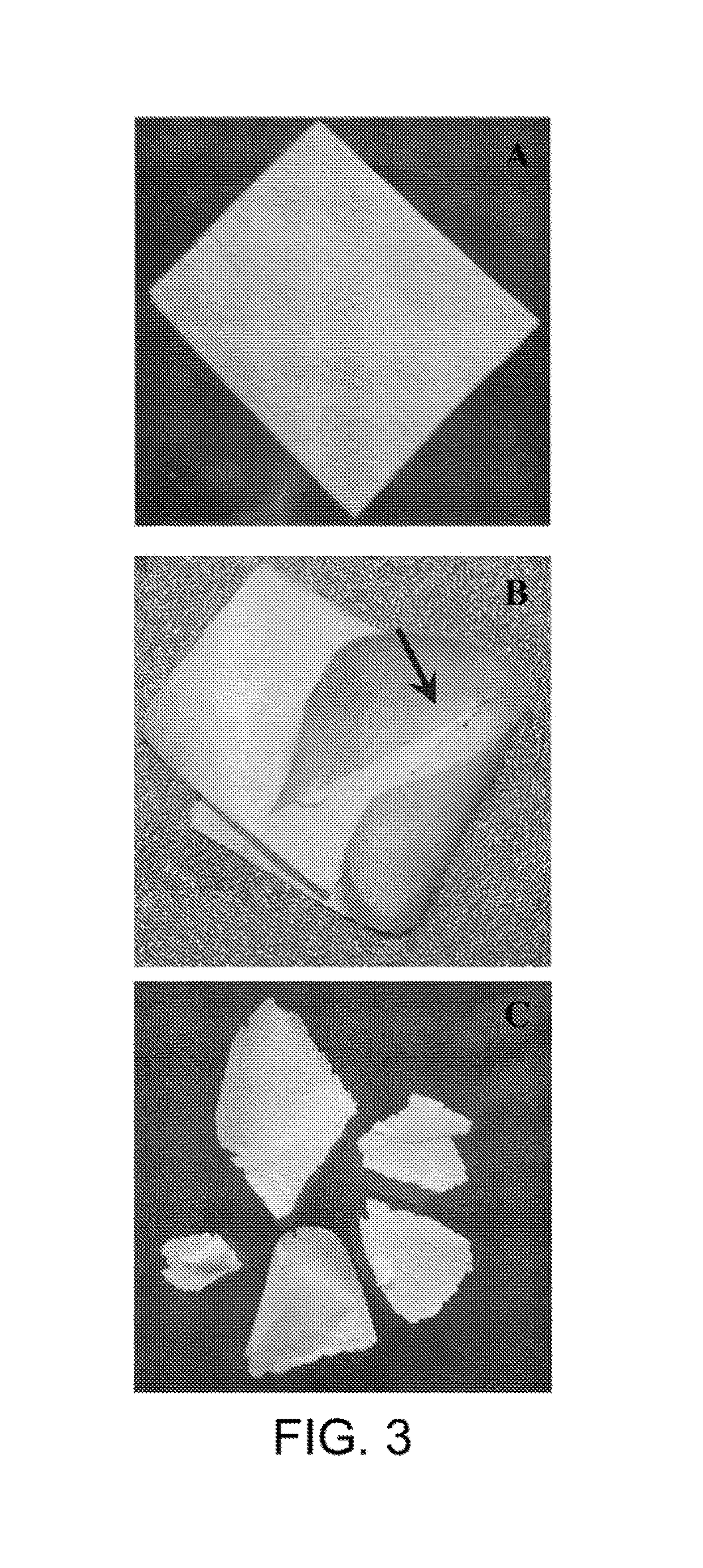Biodegradable chemical delivery system
a delivery system and biodegradable technology, applied in the field of biodegradable polymeric materials, can solve the problems of inability to biodegrade pla by microorganisms or enzymes in soil or water, disturbance of the ecosystem, and limited alternative disposal methods, so as to inhibit the growth rate, inhibit the maturation, and promote the growth rate
- Summary
- Abstract
- Description
- Claims
- Application Information
AI Technical Summary
Benefits of technology
Problems solved by technology
Method used
Image
Examples
examples
6.1 Example 1: Nanocomposite Fibers Electrospun from Poly(Lactic Acid) / Cellulose
[0190]Abstract
[0191]This example demonstrates the electrospinning of PLA / cellulose nanocomposite fibers at elevated temperature from Poly(lactic acid) (PLA) in dimethylformamide (DMF) solutions containing suspended cellulose nanofibrils. Cellulose nanofibrils were prepared by sulfuric acid hydrolysis. The rod-like morphology of cellulose nanofibrils was studied by transmission electron microscopy (TEM). Electrospinning conditions were optimized to form PLA / cellulose nanocomposite fibers with uniform diameters and smooth morphology at cellulose nanofibril content loadings of 0%, 1 wt % and 10 wt % (on the weight of PLA). Surface elemental composition analysis confirmed the presence of cellulose nanofibrils at the surface of PLA nanocomposite fibers. Incorporation of cellulose nanofibrils increased PLA crystallinity in the resulting nanocomposite fibers. As the cellulose nanofibril content increased, the e...
PUM
| Property | Measurement | Unit |
|---|---|---|
| wt % | aaaaa | aaaaa |
| diameter | aaaaa | aaaaa |
| length | aaaaa | aaaaa |
Abstract
Description
Claims
Application Information
 Login to View More
Login to View More - R&D
- Intellectual Property
- Life Sciences
- Materials
- Tech Scout
- Unparalleled Data Quality
- Higher Quality Content
- 60% Fewer Hallucinations
Browse by: Latest US Patents, China's latest patents, Technical Efficacy Thesaurus, Application Domain, Technology Topic, Popular Technical Reports.
© 2025 PatSnap. All rights reserved.Legal|Privacy policy|Modern Slavery Act Transparency Statement|Sitemap|About US| Contact US: help@patsnap.com



